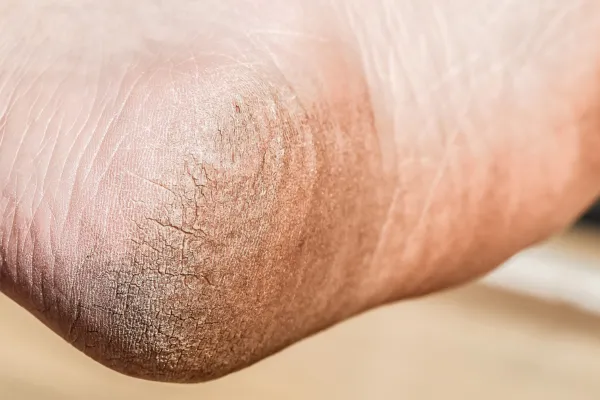
Fissures vs. Dry Skin: What’s the Difference and Why It Matters
When patients visit us at Coventry Foot Doctor, one of the most common things they ask about is the difference between dry skin and fissures. At first glance, they might seem similar—but they’re not. And knowing the difference can save you a lot of discomfort, and in some cases, prevent serious complications.
Let’s break it down.
🧴 What Is Dry Skin?
Dry skin on the feet—what we call xerosis—is incredibly common. It usually looks flaky, rough, or slightly scaly. You might notice a bit of itching or tightness, especially around the heels or sides of your feet.
Dry skin is usually caused by things like cold weather, dehydration, hot showers, harsh soaps, or standing for long periods. Thankfully, it’s usually mild and responds well to simple self-care routines: moisturising, exfoliating, and avoiding irritants.
🦶 What Are Fissures?
Fissures are a more serious step up from dry skin. They are deep cracks in the skin, usually forming around the heels. These cracks can sometimes bleed, become very painful, and even get infected if not treated properly.
Fissures often start as dry skin but develop when that dryness goes untreated. The constant pressure from walking causes the dry skin to split, creating open cracks that can worsen over time.
For some people—especially those with diabetes, poor circulation, or weakened immune systems—fissures can become more than just painful. They can lead to infections, ulcers, and long-term foot issues.
🔍 Why the Difference Matters
The key thing to remember is this: dry skin is usually a cosmetic issue, while fissures are a medical one.
Dry skin is generally painless and doesn’t pose much risk. It can be managed at home with good foot care, moisturisers, and lifestyle changes.
Fissures, on the other hand, often hurt, especially when walking or standing. They increase the risk of infection and sometimes require professional treatment—especially if they’re bleeding, deep, or not healing.
🛠️ How We Treat Fissures at Coventry Foot Doctor
When you come to our clinic with heel fissures, we don’t just hand you a cream and send you on your way. We assess what’s causing the problem and create a treatment plan tailored to your needs.
This might include:
Gently removing thickened, cracked skin
Applying medical-grade moisturisers and dressings
Recommending footwear that supports and protects your heels
Providing orthotics to relieve pressure on the cracked areas
Managing any signs of infection
Investigating underlying issues like diabetes or skin conditions
We aim to not only heal the fissures but also prevent them from coming back.
✅ Tips to Prevent Fissures
Whether you’re dealing with dry skin now or want to avoid fissures in the future, these simple steps can help:
Moisturise your feet daily with a rich, urea-based cream
Avoid walking barefoot on hard surfaces
Drink plenty of water and eat a balanced, nutrient-rich diet
Choose shoes that support your heels and fit well
Exfoliate gently once a week to remove dead skin
Good foot care today can save you from painful problems tomorrow.
📍 When to Seek Help
If your heels are cracked and sore, bleeding, or showing signs of infection—or if they’re just not improving with home care—it’s time to see a professional.
At Coventry Foot Doctor, we’re here to help. Our team has the experience, tools, and techniques to get your feet back to full health and comfort.
Don’t wait until walking becomes painful. Book your appointment today and let us take care of your feet—so they can take care of you.
Ask Abid And His Team
Fill in the form to request a Call From Our Team
One of our team will call you for FREE and answer any questions or concerns you may have about your uncomfortable Foot Pain
© Copyright 2022. Biomechanix Clinic Ltd. All rights reserved.





